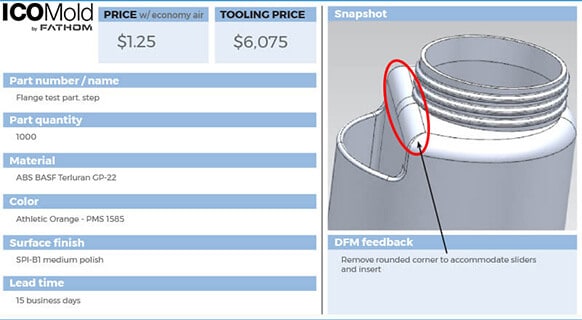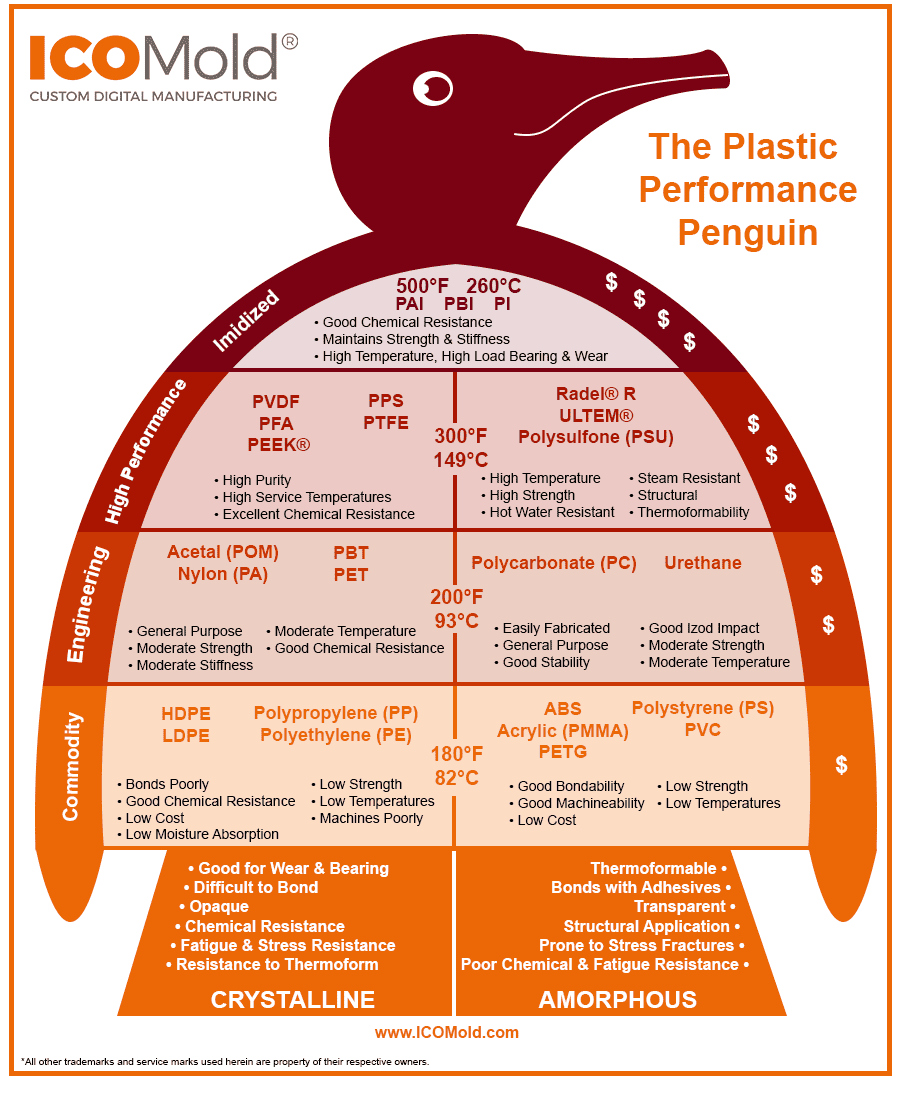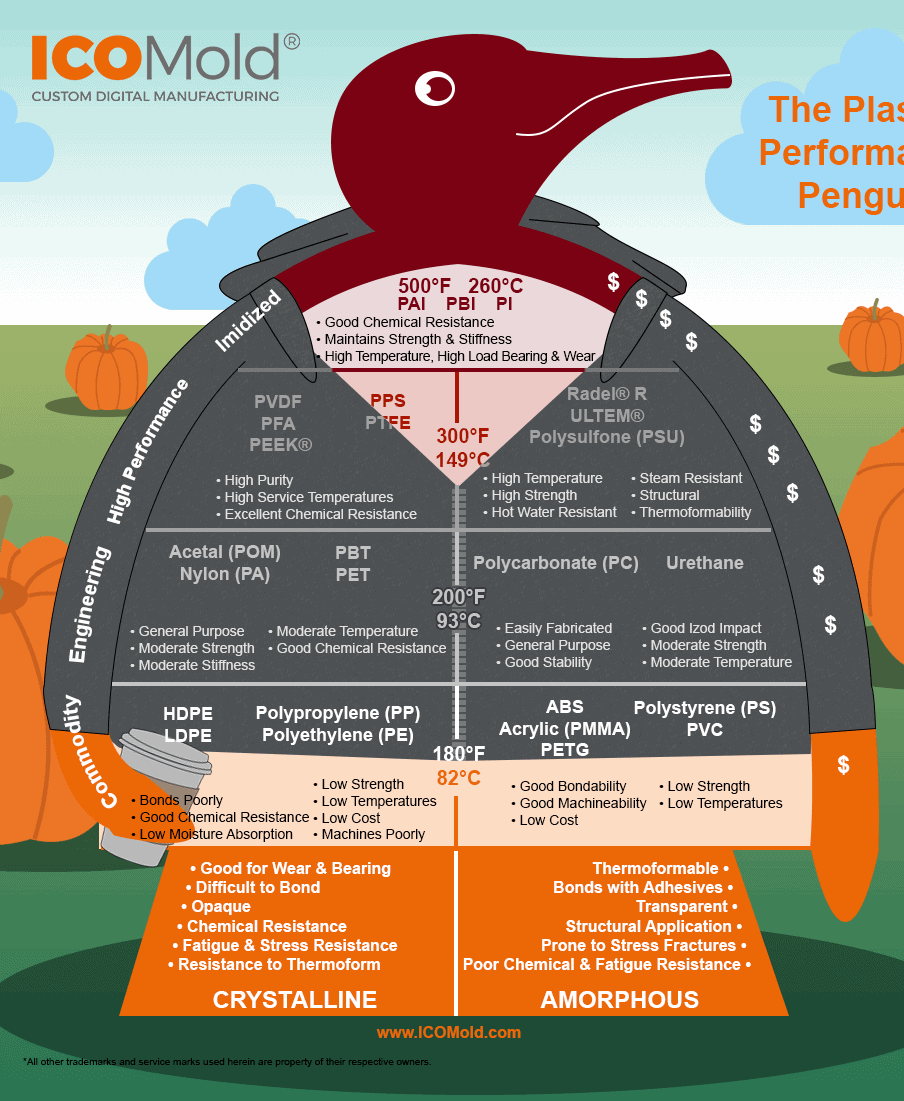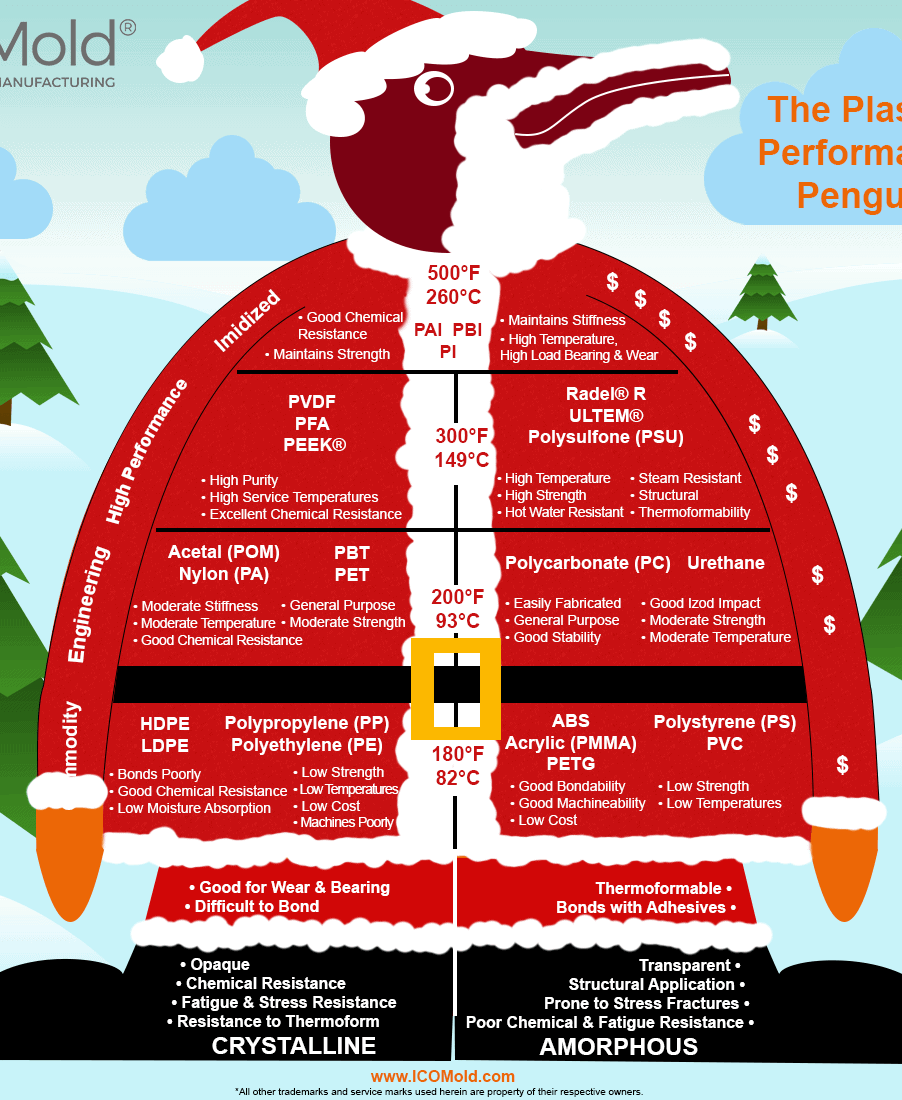When choosing the plastic material for your injection molding project, you have literally thousands of materials to choose from. There are several factors to consider, such as cost, strength and temperature range.
Wouldn’t it be nice if there was a penguin-shaped chart that helped guide you through the comparison of the most common plastic materials? Well you’re in luck because our Plastic Performance Penguin (“Triple P” for short) does just that. Sure, we could have made a boring pyramid- or triangle-shaped chart, but a penguin is way more fun!




















